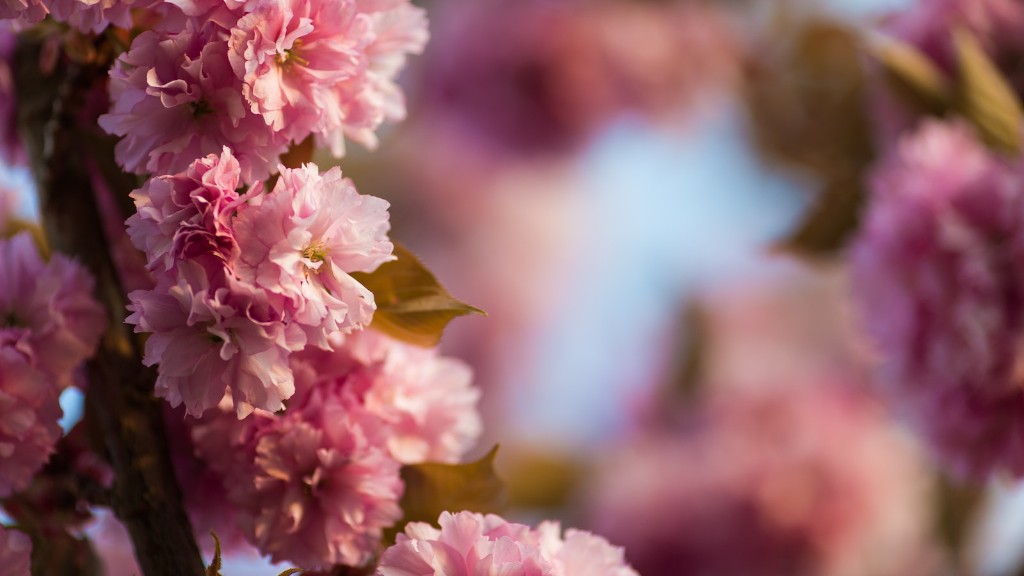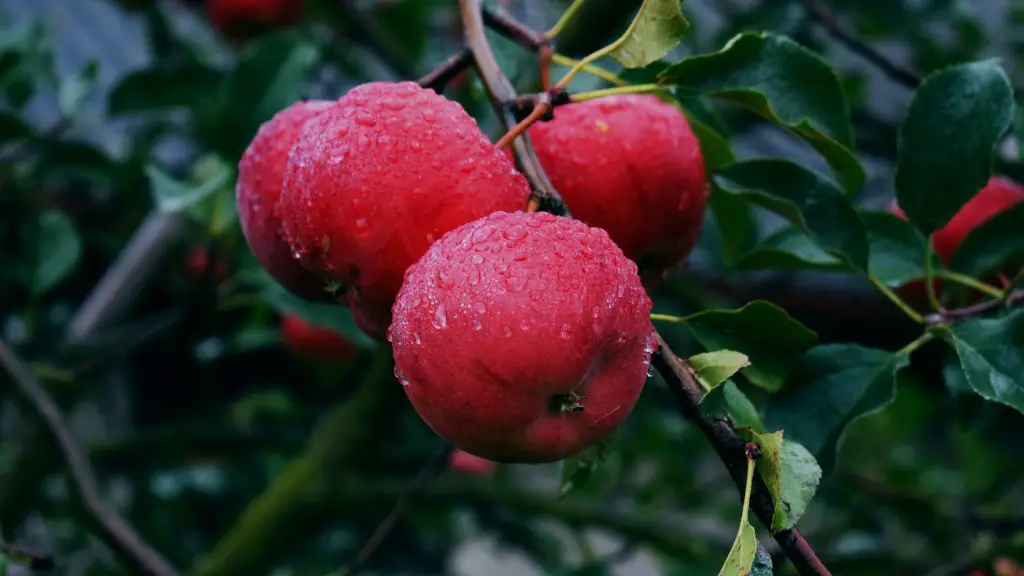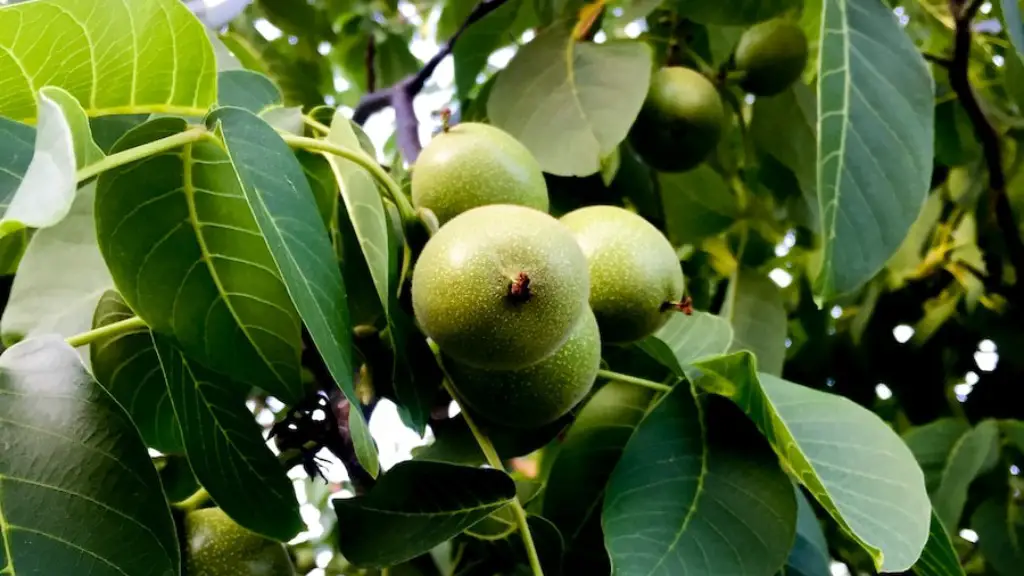Home gardeners often have a goal of producing cherries from their own cherry trees. Unfortunately, these efforts can often be unsuccessful. So what are the reasons that a cherry tree may not produce cherries?
Cherry trees require specific growing conditions, including full sun, adequate irrigation, fertilization, and pruning, in order to produce a crop of cherries. If any of these conditions are not met, the cherry tree may not be able to produce cherries. Additionally, cherry trees need to be two to three years old before they are capable of bearing fruit.
In addition to the need for specific growing conditions and an appropriate maturity, certain more subtle factors can also affect the ability of a cherry tree to produce cherries. Weather can be a major contributing factor, particularly during the blooming period when cherries need a certain number of days with temperatures above 55 degrees Fahrenheit in order to set a crop of cherries. If the temperature drops below 55 degrees Fahrenheit, the immature buds may not be able to set cherry fruit.
Fungal diseases, insect pests, and other environmental factors such as poor nutrition and soil conditions can also affect a cherry tree’s ability to set a crop. If any of these conditions are present, it is important to take steps to alleviate them in order to give the cherry tree a better chance at producing a crop.
Finally, a cherry tree may not be producing cherries because it has been planted in a spot that does not get enough sunlight. Cherry trees need full sun exposure for a good production of cherries. If the cherry tree is in an area that does not get enough sunlight, it is important to find a spot that does get enough light in order for the cherry tree to produce a crop.
Improving Cherry Tree Health for Better Productivity
Cherry trees require regular maintenance in order to stay healthy and productive. A cherry tree’s fertilizer and irrigation needs should be met and pruning should be done on an annual basis in order to remove dead and dying branches. Fungal disease should also be monitored and treated promptly if it appears.
In addition to monitoring and treating fungal problems, cherry trees can be protected against insect pests. There are various sprays that can be used to control insect populations, and these should be applied according to label instructions.
It is also important to make sure that the cherry tree has adequate nutrition. A soil test should be conducted in order to determine what nutrient deficiencies may exist in the soil and to determine how much fertilizer should be applied to the tree. It is important to use the appropriate type and amount of fertilizer for the specific type of tree.
Finally, it is important to ensure that the cherry tree has enough sunlight. If the tree is in a spot where it is not getting enough sun, it is important to find another spot that is receiving more light.
Seasonal Care to Help Produce Cherries
Cherry trees require specific care depending on the season in order to produce a crop of cherries. During the spring season, cherry trees should be monitored for the emergence of pests, fungus and other diseases that can attack the tree and reduce the likelihood of cherry production.
During the summer months, adequate amounts of water should be provided in order to keep the cherry tree healthy. Regular watering is especially important during hot, dry periods. The cherry tree can also be fed with fertilizer and pruned to ensure that it is in optimal health.
It is important to protect the cherry tree from any late frosts in the late spring or early summer. If a frost occurs, then it is important to cover the cherry tree with an appropriate covering in order to protect it. Additionally, it is important to make sure that the cherry tree is not experiencing any extreme heat during the summer, as this can damage the tree and reduce its ability to produce cherries.
Finally, it is important to monitor the cherry tree for any pests or fungi during the fall season. If any are detected, then it is important to take steps to address them in order to ensure that the blossoms and fruit of the cherry tree are not damaged.
Pollination Requirements for Cherry Trees
In order for a cherry tree to produce a crop of cherries, it needs to be properly pollinated. The most common method for cherry tree pollination is by providing two or more varieties of cherry tree in close proximity to one another. This allows for cross-pollination, meaning that the two varieties will fertilize one another’s cherry blossoms and produce a crop of cherries.
It is also important to ensure that there is a sufficient population of pollinators around. Bees are the most efficient pollinators for cherry trees; some varieties, however, are able to self-pollinate. To attract bees, gardeners can plant other flowering plants near their cherry trees to provide the necessary food source for pollinators.
Gardening clubs, local orchardists, or other local organizations may be able to provide insight on efficient methods for cherry tree pollination. Additionally, local university extension offices are often a great resource for specific information on the best ways to pollinate a cherry tree.
Varieties and Types Of Cherry Trees
There are two main types of cherry trees: sweet-cherry or tart-cherry trees. Sweet cherries are the type of cherry that is most commonly eaten fresh. Tart cherries, also known as sour cherries, are mainly used in cooking, baking, and canning.
Within these two categories, there are a variety of cherry tree varieties to choose from. Sweet cherry varieties include Bing, Rainier, Lambert, and Lapin. Tart cherry varieties include Montmorency, Evans, North Star, and Balaton. Each variety has its own characteristics, and it is important to research these varieties in order to determine which is the best for a particular region.
Alternatives for Home Horticulturists
If a home horticulturist is unable to successfully grow and produce cherries from a cherry tree, there are other alternatives available. Growing cherries from seed is an option, as is planting cherry trees in containers. Additionally, cherry trees can be planted in other climates such as the Mediterranean or in other parts of the United States, such as California or the Pacific Northwest.
Many horticulturists opt to purchase pre-packaged “pick your own” cherries, instead of trying to produce their own. This is a great option for those who do not have the time or resources to set up their own cherry orchard. Additionally, there are a number of online retailers that now sell fresh cherries.
Finally, many home gardeners simply purchase dried or frozen cherries in order to satisfy their cherry craving. This is a good option for those who do not have the land or resources to grow their own cherry trees.
Chilling Requirements for Cherry Trees
In order to produce cherries, cherry trees require a certain amount of chilling hours. This is the amount of time that the cherry tree requires to be below 45 degrees Fahrenheit in order to rest and be primed for flowering and later fruit set. Different varieties of cherry trees require different amounts of chill hours; for example, some varieties require 500 chill hours while others require 800 chill hours.
Chill hours can vary greatly depending on a gardeners’ location, season and climate. It is important to determine the chill hour requirements of your particular cherry variety before planting, so that one can choose a tree that is able to survive in the current climate. Additionally, most cherry varieties will benefit from the addition of supplemental chilling.
Finally, one should also consider the type of pollinators needed in order to ensure the successful pollination of cherry trees. For example, some cherry varieties require specific types of bees for good fruit set, while others do not. It is important to become familiar with the requirements of one’s particular variety in order to ensure that pollination is successful.




